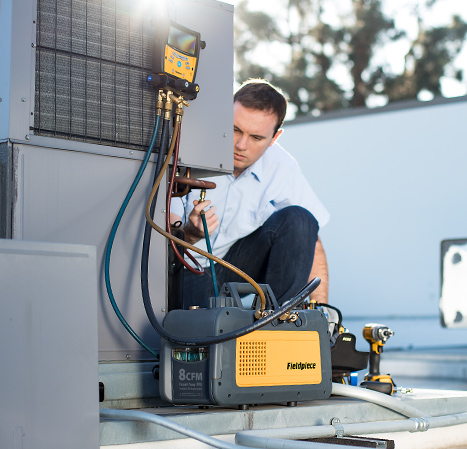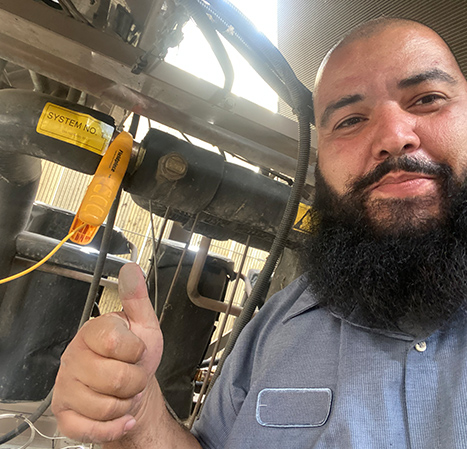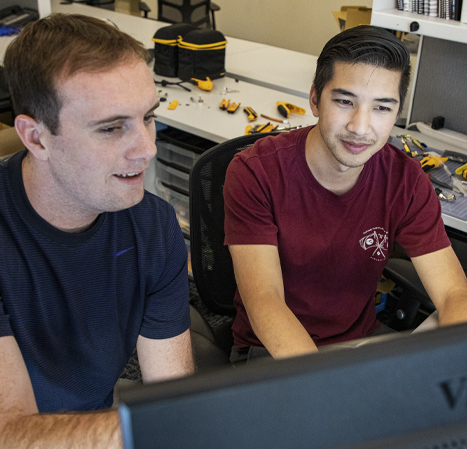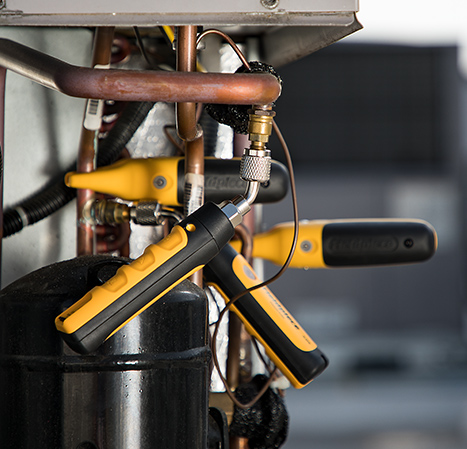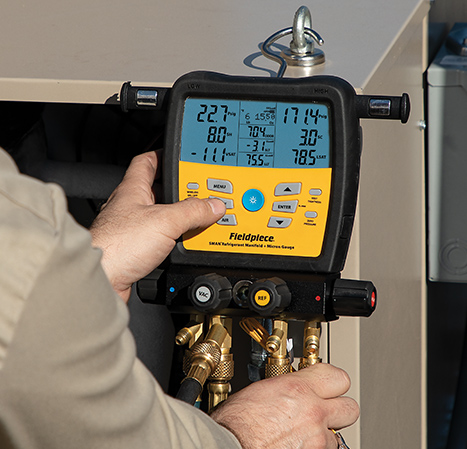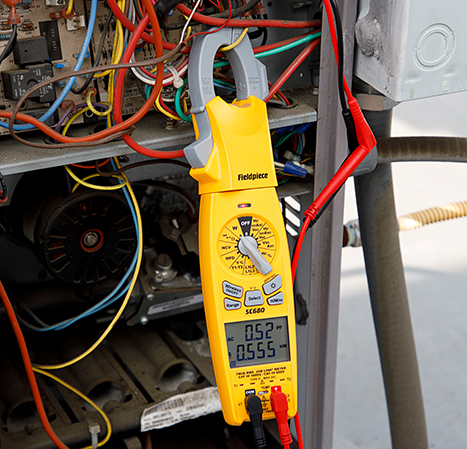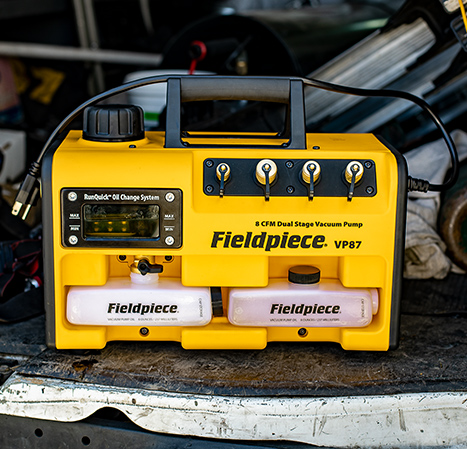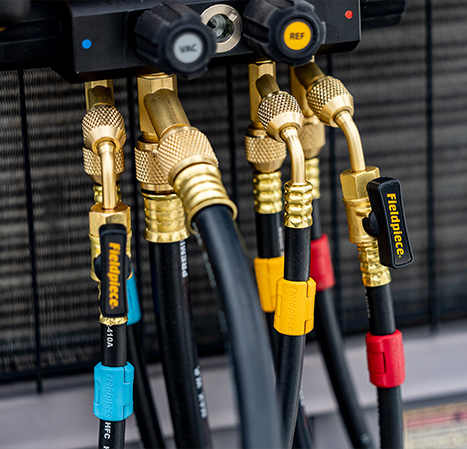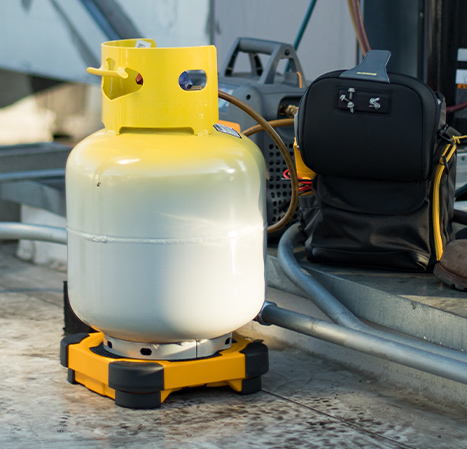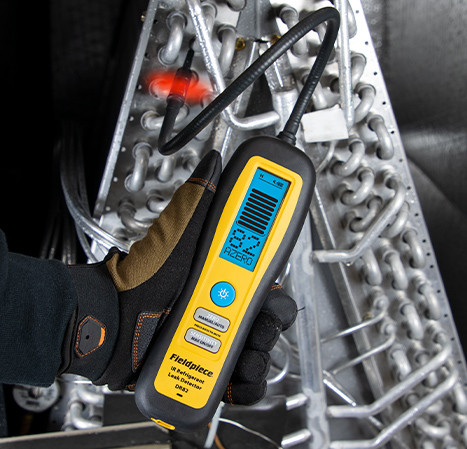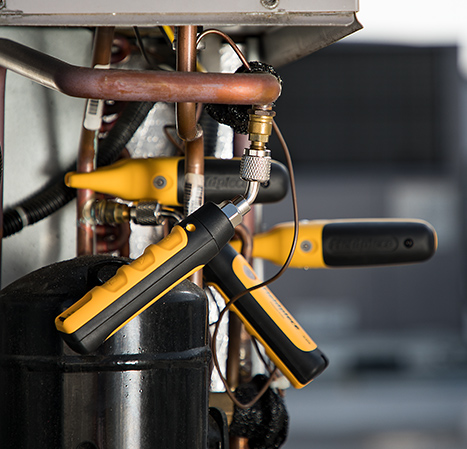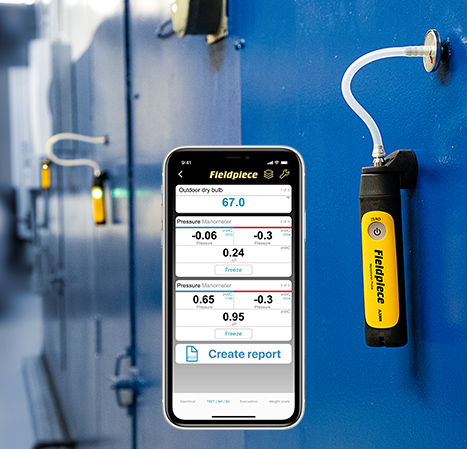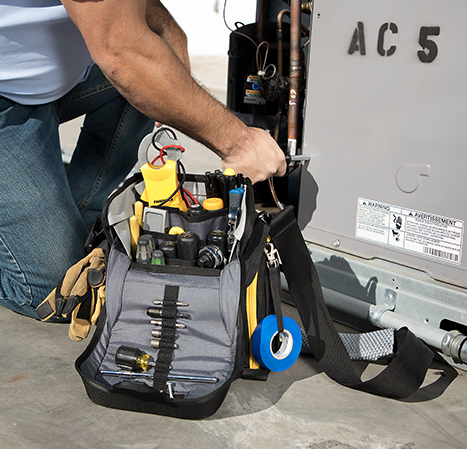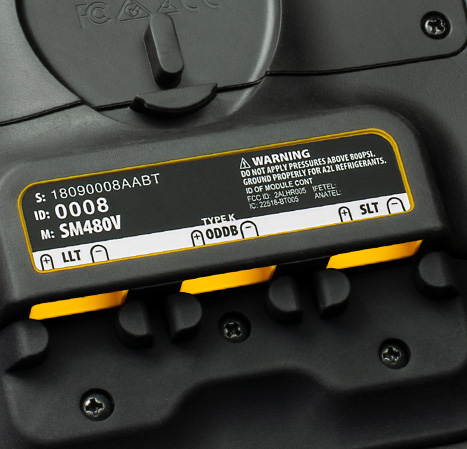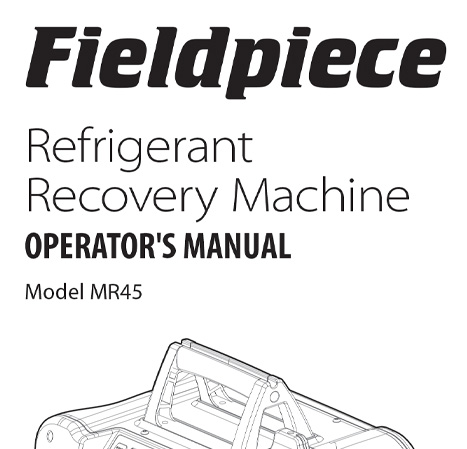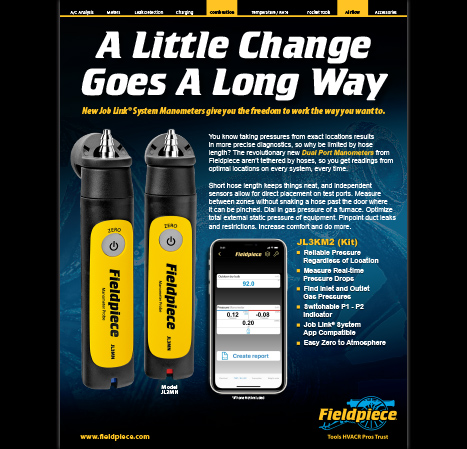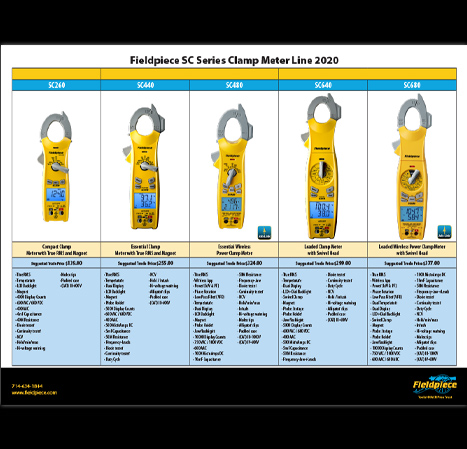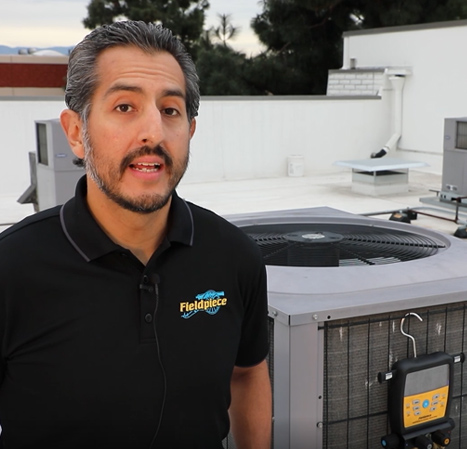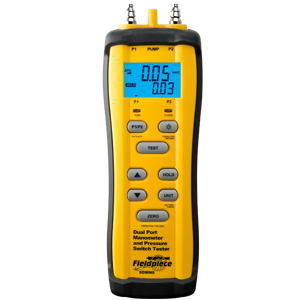What Is a Manometer?
A manometer is an instrument used to measure and indicate pressure. There are two types of manometers, analog and digital. The most basic and simplest form of an analog is the U-Tube manometer, a glass or rubber tube bent in the shape of a “U” where numbers are listed and spaced every inch on each side, and water is placed in between the bends of the “U”. When pressure is applied, either positively or negatively, the water moves to indicate the pressure behind it expressed in inches of water column (inWC). Inches of water column is the most common form of measurement in the HVAC industry when measuring static or gas pressure, although other units of measure are available and used worldwide. One of the most common analog types is the Magnehelic® gauge. These are found many times installed by the manufacturer of the system so that contractors can easily read the pressure of the system. However standalone digital manometers have become the new industry standard when it comes to measuring static pressure. With a higher accuracy readout, optional dual ports, additional parameters and readouts, in many cases they are much easier to use.
Why Should You Use a Manometer?
Static pressure is the amount of pressure a fan pushes or pulls against in order to move air throughout HVACs ducting. To imagine static pressure in a simple form, imagine the pressure in a tire, this is static pressure pushing against the inside of the tire to inflate it. One of the most overlooked opportunities for a service technician is to offer customers improved HVAC system performance. There are many ways to improve a systems performance – adding larger or additional ducts; finding and repairing pinch points and restrictions; installing dampers; balancing the system; and adjusting the fan’s speed. A national study performed by NCI shows that the average inefficient HVAC system was performing at 55% of its rated capacity. That means that a customer is paying 45% more than they need to for the electricity to run their inefficient system.
Balancing static pressure is one of the most important factors in HVAC systems design. To put it simply, static pressure refers to the resistance to airflow in a HVAC system’s duct work and its components. The pressure (push) of the air must be greater than that of the resistance to the flow or air will not circulate properly or efficiently through the ducts.
If the static pressure exceeds the fans designed specifications the results will be a system with poor or low airflow. While simple maintenance, replacing restrictive air filters and cleaning dirty fans and coils, will increase airflow, if the static pressure in the system is over or under the designed conditions, the system will never operate at full efficiency or capacity. This can result in more unsatisfied customer call backs and the possibility of future equipment failure.
The Fieldpiece SDMN6 a trusted solution.
The SDMN6 also measures gas pressure up to +/- 60” WC (inWC) with a resolution of 0.1”, helping to determine if the gas pressure coming out of the house or regulator is correct. Static pressure readings up to +/- 2” WC with a resolution of 0.010” WC which will enable technicians to measure small differences in the static pressure. The instrument’s ability to read both positive and negative pressure allows for it to be used to measure vacuum control lines. The easy–to–read dual display shows the selected port on the upper display while the differential pressure is displayed below it, without the need to scroll through the display or make calculations. A zero button allows for a simple zero adjust bringing the meter to different ambient pressures. The included static pressure probes significantly improve the accuracy while allowing for an easier and simple setup.
With four different units of measurement to choose from (inWC, mmWC, mBar, and PSI), whatever measurement is required by the manufacturer can easily be selected and read. A brightly lit backlight display illuminates for ease of use no matter how dark the area you are working in. Additionally, the SDMN6 features an APO (auto power off) function to help conserve the life of the battery, a magnetic strap for “hands free” operation, and a carrying case that fits the manometer, all its accessories, and a few universal pressure switches. Backed by world class technical support and one of the industry’s best warranty services, you can rest assured you and your tools are in good hands.
 English
English French
French Spanish
Spanish
